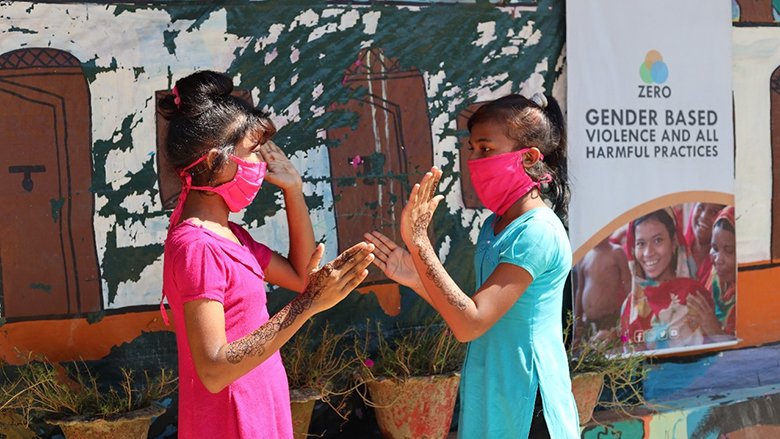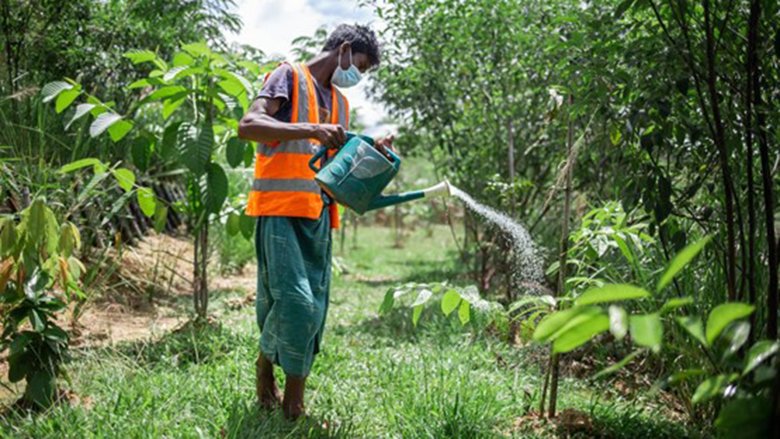Challenge
The Displaced Rohingya Population (DRP) began crossing into Bangladesh in August 2017 in what has been one of the fastest developing forced displacement crises in the world. The Rohingya are now living in makeshift shelters and congested settlements in a region that already had low access to basic infrastructure and services and is prone to cyclones and floods.
The influx placed enormous pressure on the host community and its infrastructure and services and strained already limited resources. The incoming displaced people outnumbered the local population by about 3-1. At least 80 percent of the DRP are dependent on external assistance for survival. The situation of displaced women and girls, who account for 52 percent of the DRP, is particularly difficult. Women had been subjected to gender-based violence even before they fled and remain at risk in the camps, including to trafficking.
Approach
The World Bank has supported the Government of Bangladesh through a phased and multi-sectoral approach to address both the immediate and medium-term needs of the DRP and the host communities in Cox’s Bazar. The Bank approved the Emergency Multi-Sector Rohingya Crisis Response Project (EMCRP) in March 2019. It focused on strengthening the government’s systems to improve access to basic services and build the disaster and social resilience of the DRP and host communities. The project is also committed to strengthening the local community’s systems to improve access to basic services and build the disaster and social resilience of the population of Cox’s Bazar district.
The project helps build and rehabilitate basic infrastructure, construct climate-resilient multipurpose disaster shelters as well as access and evacuation roads, improve social resilience, prevent gender-based violence and strengthen government capacity. The EMCRP original financing was followed by other World Bank interventions in support of the DRP, such as in health (US$50 million added to the ongoing US$500 million Health Sector Support Project); and education (US$25 million added to the US$130 million Reaching Out of School Children Project). A Health and Gender Support Project for Cox’s Bazar district (US$150 million) and an AF for the Safety Net Systems for the Poorest Project (US$100 million) were prepared at the same time as the EMCRP AF.
The Project is implemented with close coordination among two government ministries, three implementing agencies, bilateral development Partners, UN Agencies, and NGOs.
Results
- 216,300 DRP have access to improved public infrastructure
- 216,300 DRP have access to improved water sources of whom 112,476 are women
- 53,790 have access to improved sanitation of whom 27,971 are women
- 107 lightning protection systems have been installed which cover around 133,357 DRP
- 17 km of roads were improved and made climate-resilient, and 1,265 solar streetlights have been installed in different camps
- Firefighting and search & rescue equipment was provided to the Fire Service and Civil Defence
- 10,500 women and girls are using GBV prevention/response services as a result of the project
- 175,541 households received stipends for participation in community works and services
- 7,017,206 workdays have been generated through community services, and 1,656,707 workdays through community workfare
Bank Group Contribution
An initial US$165 million IDA grant for the EMCRP from the IDA18 Regional Sub-Window for Refugees and Host Communities, approved in 2019, has helped Bangladesh provide basic services and build disaster and social resilience for the DRP. An Additional Financing grant of US$100 million was approved in 2020 to scale up the project activities to match the magnitude of the needs of the DRP and host communities.
Partners
The implementing agencies of the project include the Ministry of Disaster Management and Relief, the Local Government Engineering Department, and the Department of Public Health Engineering. The Bank is actively participating in existing coordination mechanisms, including partnerships initiated by the Government of Bangladesh, such as with the National Task Force and the Refugee Relief and Repatriation Commissioner’s Office, and also by the UN and partners, such as the Strategic Executive Group and the Inter-Sector Coordination Group. World Food Program and United Nations Population Funds are supporting the Government in the implementation of some parts of the project. The Bank has a strong partnership with ADB through parallel financing (US$100 million ADB) for the Rohingya Crisis Response, and complementary financing with KfW (Euro 7.0 million) for the financing of multipurpose disaster shelters. The Government of Canada enabled the first phase of the project by committing the needed resources for the IDA credit buy-down option.
Moving Forward
Despite ongoing difficulties and the unprecedented challenges posed by the COVID-19 pandemic, the implementation of the project has gone very well, demonstrating the strong commitment of the Government of Bangladesh.
The Bank is providing enhanced implementation support and is actively participating in policy discussions with the government and development partners to achieve durable solutions to the overall Rohingya crisis. The Bank will continue to engage in dialogue with the GoB to support the medium-term dimensions of the DRP situation and to tailor future support accordingly.
Beneficiaries
Project beneficiaries are the Displaced Rohingya Population settled in camps and the population of Cox’s Bazar district as host community.
Specifically, as a result of the project:
- 780,800 people will have access to improved public infrastructure
- 81,000 people will have access to climate-resilient multi-purpose disaster shelters of whom 41,610 will be women
- 100,000 Households will participate in community workfare and services
- 365,800 people will have access to improved water sources
- 171,800 people will have access to improved sanitation

